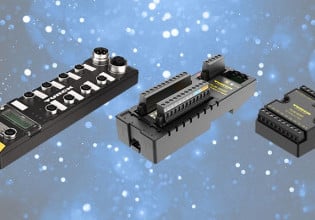UR Introduces PolyScope X Specifically Designed for Machine Tending
Universal Robots (UR) has released a new software platform, PolyScope X, to help manufacturers increase collaborative robot productivity, specifically in machine tending tasks.
Most robotic software updates arrive in response to manufacturers' need for increased flexibility to meet increasingly diverse orders in modern manufacturing. Graphical programming interfaces allow users to easily integrate collaborative robots into many different tasks, including machine tending, without prior specific robotic programming knowledge. This helps manufacturers reduce or eliminate some bottlenecks and high costs associated with the need for experienced robot programmers.
Universal Robots (UR), a Danish manufacturer and leader in collaborative robots (cobots), has designed a new software platform specifically designed for these machine-tending tasks.
Universal Robots’ New PolyScope X
In addition to the dedicated platform application industry, the new software platform helps to reduce the amount of time necessary to program certain tasks and even allows other previously unprogrammable tasks to become programmable. Called the PolyScope X, the interface hopes to help manufacturers simplify their collaborative robotic cells, making them more easily integrable and adaptable, especially in high-mix, low-volume scenarios.

Universal Robot (UR) machines are a popular choice for tending CNC machines. Image used courtesy of Adobe Stock
Benefits of the PolyScope X
The PolyScope X gives customers a new user interface with customizable capabilities. It has been designed with the intention of giving customers more flexibility, especially in automated tasks that require high-mix low-volume characteristics, a common situation in machine tending applications. PolyScope X has been able to create changeover times of 10 minutes or less, a feat unattainable with the use of any other software currently available on the market.
Quick changeover times mean manufacturers can run a larger amount of variable batches in a single day, increasing profits and throughput. In addition, the batches can be run with more flexibility and strategy in mind, helping to make the manufacturing process smoother.
The software has been built to include a reworked programming experience and a new and improved toolkit for end users tasked with programming the system. Simplified troubleshooting makes operations easier to understand so that integrators and end users can structure their program code into operations that can be reused throughout each specific program.
PolyScope X Features
PolyScope is a Universal Robotics interface built with the intention of allowing operators the ability to program cobots without extensive previous programming expertise. The solution is capable of giving operators the ability to program everything from simple tasks to complex solutions through the interface.
The interface works by giving operators access to a programming tree where they can then add different nodes that make up a visual programming hierarchy. In addition, users can program spacial points by free-driving the robot with their hands through its intended path to quickly program points without having to manually jog the robot through space. A built-in wizard can be used to find the tool center point (TCP), the center of gravity, and the weight.

Node programming with function blocks and flowcharts gives users an easy-to-read visual method for programming without prior knowledge of programming methods. Image used courtesy of Universal Robots
A dedicated safety toolkit can be used to tailor cobot safety for each specific application, ensuring worker safety is a top priority. UR caps are available for the improvement of components and applications. A software plugin can be used to create remote toolpath and TCP data. An integrated torque sensor can be used to ensure the robot uses the correct force in applications that require specific torques. Lastly, for users that need advanced programming capabilities, a Python-based programming language script is available.






